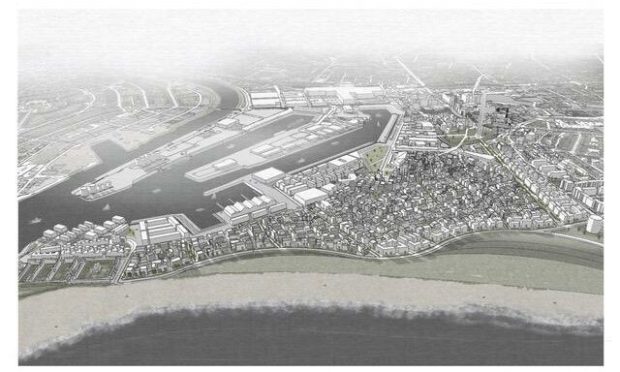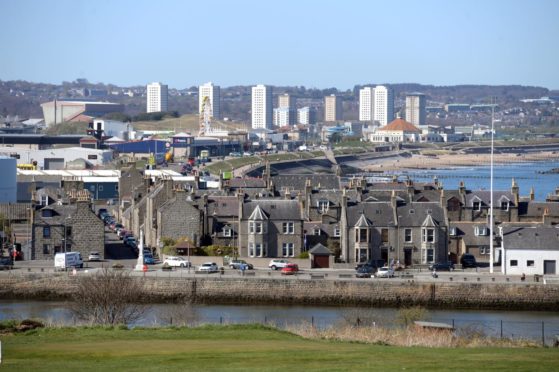A new urban village could be created in Aberdeen under plans being proposed by architecture students at Robert Gordon University (RGU).
Final-year students from The Scott Sutherland School of Architecture have been working on a project for the last two years which explores issues concerning urban living.
Their aim is to generate new ideas for the future of Aberdeen and to build on the work of last year’s students who envisaged a new beachfront for the city.
The new proposals aim to make links from Castlegate to the beachfront and harbour more “feasible and pleasurable”.
The new village would be named St Clements after the 15th Century church, which was originally built to serve the fishing community of Footdee, and be created in the same area between Castlegate and Footdee.
‘Putting people back at the heart of our cities’
David Reid, from Prestwick, is one of the students involved in the project and said his experience of living through the pandemic led him to question his way of living.
He said: “During the pandemic I think a lot of people really reassessed their priorities when it comes to how they spend their time, especially those commuting, and where they spend it, parks and the countryside have never felt so valuable.
“These are key considerations we took with us during our design work on the project and feel this approach would be applicable across the city and country. In the end I think it’s about putting people back at the heart of our cities.
“Our aim is to create a new urban village that is sustainable, affordable and accessible for everyone. We want to create a village that combines private living, flexible working spaces, easy to access amenities, and shared community areas.
“A place where people can enjoy a social lifestyle and be part of a vibrant community. We want to bring amenities to the residents rather than forcing them to travel in search of them.”
The urban village would “take a lead role” in developing a sustainable future for the city by encouraging people to walk and cycle or use public transport and electric vehicles.
‘Re-establish village life’
The plans also include a shared community heating system which would be created by tapping into hot rocks under the city and using local expertise to create a natural and inexpensive geothermal energy.
Greenery would be at the “heart of the village” with all people encouraged to enjoy a healthy lifestyle while security would be built in to encourage a social living space.
Professor Neil Lamb, course leader at RGU, is leading the project alongside visiting professor Bill Black, who is director of Richard Murphy Architects in Edinburgh.
Mr Lamb said: “At a time when we have seen unprecedented change in city living, with some questioning the validity of living in cities in the post pandemic environment, the students set out to see what type of place could be made, learning from best national and international examples that people would want to live, work and play in.
“As humans, we long for meaningful relationships with those around us yet all too often infrastructure and the way we use our cities seems secondary in large re-developments.
“The new urban village of St.Clements, would re-establish village life at the heart of the city and create a model way of city living for years to come.
“It would be a place for all demographics; old and young, rich and poor to live in a new settlement that encourages citizenship and a real sense of community.”











